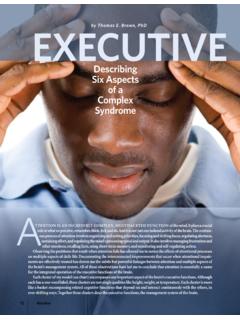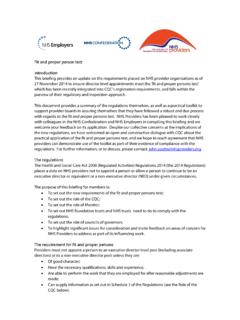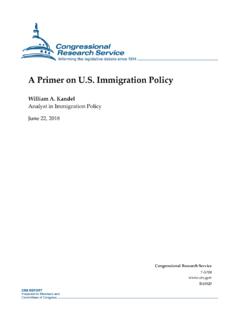Transcription of Teenage Births: Outcomes for Young Parents and …
1 December 2008 Teenage Births: Outcomes for Young Parents and their ChildrenThe Schuyler Center for Analysis and Advocacy wishes to thank the following organizations for the assistance in the research of this document: The New York State Department of Health, Center for Community Health and the Public Health Information Group; and the New York State Council on children and Families. We would also like to thank the Robert Sterling Clark Foundation for helping to fund this Center for Analysis and Advocacy150 State Street, 4th FloorAlbany, NY 12207 Tele. 518-463-1896 Fax for Teenage Child Bearing: What the Data Shows PrefaceThe Schuyler Center for Analysis and Advocacy (SCAA) released Growing Up in New York: Charting the Next Generation of Workers, Citizens and Leaders in 2006.
2 That report, and two subsequent updates, provide data on what is happening to New York s children in key areas of interest to policymakers. But children s lives cut across these key areas, and across state systems. Their health, their educational achievement, their economic security all come together to chart their course in life. SCAA staff has taken the idea of using information to tell a story about children to a new level. This report brings together data to show how teen Parents and their children fare across these key areas. It is informative to see how investments in programs for youth who have become disengaged from school, greater enrollment of youth in health insurance and the expansion of home visiting can improve Outcomes for Parents and children .
3 The impact and consequences of policy deci-sions are not always recognized or become obscured because of the influence of other factors. Our hope is that this report will encourage policymakers to see relationships between life areas and across systems and take these into account when making decisions regarding programs and budget SummaryTeen childbearing is a much-studied, confounding public policy topic that is closely associated with a multitude of social issues, including persistent pov-erty, school failure, child abuse and neglect, health and mental health issues. Teen pregnancy rates are at the lowest level in 20 years and teen birth rates are at the lowest level ever recorded in the United How-ever, teen pregnancy and childbearing are still compel-ling issues and it benefits the family, and society, if:The baby is born healthy and the mother is child is prepared for school.
4 The mother is educated and able to care for the mother becomes economically and early intervention programs hold the greatest promise for improving the lives of Young women and men, and boost the future prospects of their children . Progress can be made on what was once viewed as an unmanageable social and economic problem. Therefore, it only makes sense for New York State to invest in a pre-natal home visiting system that connects to teens when they become pregnant, and provides a continuum of services to the mother, father and child for a sustained period of time. This paper aims to link data on indicators across various human service domains to help lawmakers develop state policies that effectively reduce teen preg-nancy, as well as comprehensive programs for very Young Parents and their of teen mothers bear the greatest burden of teen pregnancy and childbearing, and are at signifi-cantly increased risk for a number of economic, social and health problems.
5 The children of teen mothers are more likely to be born prematurely and at low birthweight, raising the probability of infant death, blindness, deaf-ness, chronic respiratory problems, mental retar-dation, mental illness, cerebral palsy, dyslexia, and of teen mothers are 50% more likely to repeat a grade, less likely to complete high school and have lower performance on standardized tests than those born to older Parents . The children of teen Parents are more likely to live in poverty and suffer higher rates of abuse and neglect than would occur if their mothers delayed sons of teen mothers are 13% more likely to end up in daughters of teen Parents are 22% more likely to become teen mothers Teenage Births: Outcomes for Young Parents and their children Outcomes for Teenage Child Bearing: What the Data ShowsFor Young women, coping with a disadvantaged background is hard enough.
6 Having a baby during adolescence only makes matters worse. Compared to women of similar socio-economic status who postpone childbearing, teen mothers are more likely to end up on public mothers are less likely to complete the educa-tion necessary to qualify for a well-paying job only 41% of mothers who have a child before age 18 ever complete high school. In the past 25 years, the median income for college graduates increased 13%, while the median income for high school dropouts decreased 30%. Teen mothers are likely to have a second birth which can further inhibit their ability to finish school or keep a job. About one-fourth of Teenage mothers have a second child within 24 months of the first Nationally, teen childbearing costs taxpayers at least $7 billion each year in direct costs associated with health care, foster care, criminal justice, pub-lic assistance and lost tax Teen fathers may experience many of the same adverse Outcomes as teen mothers.
7 This paper focuses on mothers, but if the state wants positive Outcomes for the children of teen Parents , it must also focus on teen fathers. There must be outreach that engages teen fathers, makes them a part of the birth experience, facilitates their continued education, assists them with employment and child support, and counsels them on relationships and childbearing also carries tremendous mon-etary costs for the state. According to an analysis from the National Campaign to Prevent Teen Pregnancy, teen childbearing in New York costs taxpayers at least $421 million in state, federal and local Most of the costs are associated with negative consequences for the children of teen mothers. For example, the average annual cost associated with a child born to a mother age 17 and younger in New York is $6,094.
8 In 2004, annual taxpayer costs associated with children born to teen mothers in New York included:$186 million for public health care (Medicaid and SCHIP). $204 million for child welfare. $203 million for incarceration.$117 million in lost tax revenue, due to decreased earnings and spending. Available data reveal a complex interaction among such factors as poverty, education, disaffection, health and mental health that can lead to children having children . While teen birth rates declined over the last decade, that decrease may be impossible to sustain absent a more encompassing, multi-agency approach that takes into account the intensely challenging lives of many teens. As part of an overarching public policy approach, SCAA recommends that a formal, cross-systems work-group, including representatives from the Governor s staff, legislators, agency staff and advocates be estab-lished to set measurable, time-specific goals to: Develop data sources across agencies that provide a clear understanding of teen child efforts to reduce family poverty by setting a poverty reduction funding for programs that evidence shows reduce teen pregnancy.
9 Keep teens connected to schools for their benefit and the benefit of their adequate health and mental health services available to all teens and their additional assistance to teens in foster care and those transitioning from foster programs that strengthen families through parenting skills training, support and the public assistance and grow home visiting affordable, high-quality child care for teen mothers. Outcomes for Teenage Child Bearing: What the Data Shows Prevention is the Best ApproachResearch shows that adverse early childhood experiences can negatively impact Outcomes in later life. Abuse and neglect, trauma, and parental substance abuse all negatively shape the adult psyche, behavior and health. On the other hand, posi-tive early childhood experiences, such as high-qual-ity early learning and consistent, nurturing relationships with responsible adults, can help lay a solid foundation for success.
10 While 85% of a person s brain architecture is set by age five, making prevention imperative, it is during the time between child-hood and adulthood that the brain undergoes some of its most exten-sive and important changes. The long-held belief that the brain is fully formed by adolescence is simply not true. In fact, the brain may be at its most flexible, and perhaps precari-ous, during adolescence. Just as the body is maturing in these formative years, the wiring in the brain also becomes more complex and structured. According to research, processes such as reasoning, priority-setting, organizing plans and ideas, forming strategies and impulse control are being developed as the parts of the brain that control these activities are being Adolescence is a time when the brain is still strength-ening its executive functions: self-regulation, complex attention, working memory, and decision-making, as well as the ability to initiate and stop activities and appreciate the consequences of vital parts of their brains have not fully developed, youth are not always able to assess the future consequences of their actions.







